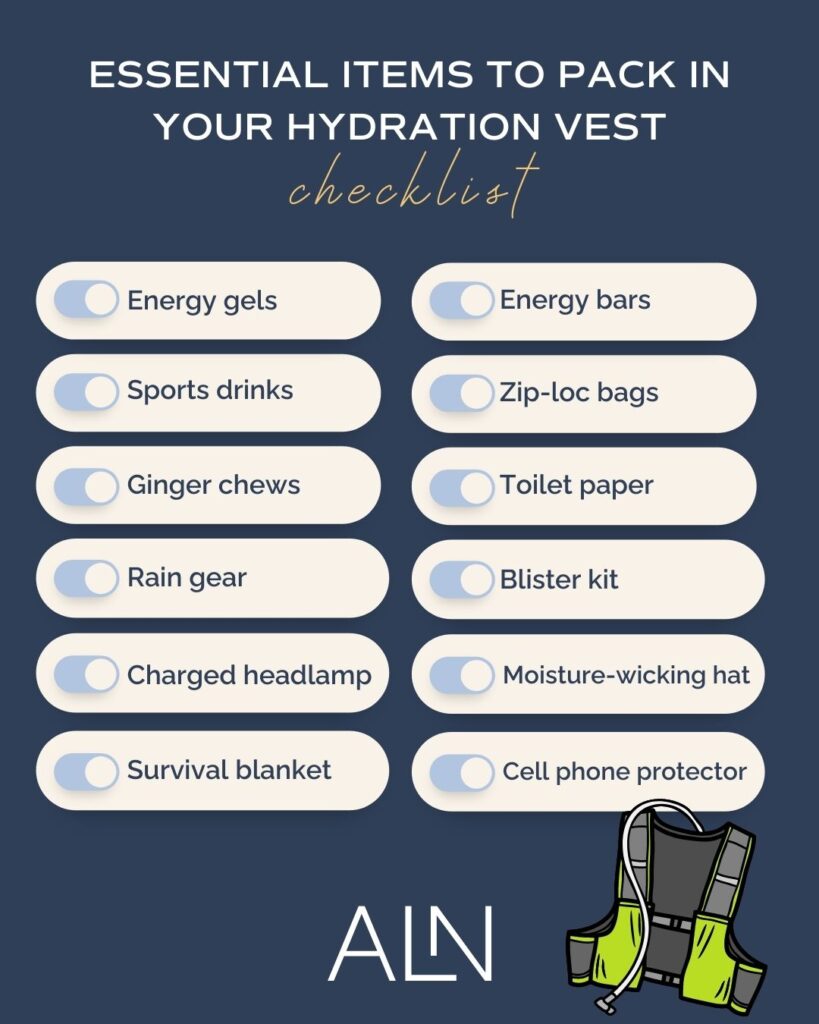RUNNING →
Level Up Your Nutrition Game With Our Freebies
Alex
I provide nutrition coaching for endurance athletes to improve performance and body composition through a simple and flexible eating style.
Hi, I'm
ATHLETE EATING GUIDE →
PROTEIN →
TRIATHLON →
RECIPES →
PERFORMANCE NUTRITION →
SUPPLEMENTS →
HOLIDAY & TRAVEL →
PLANT-BASED →
FEMALE ATHLETE NUTRITION
Explore the Blog
LEARN MORE →
ATHLETE GROCERY SHOPPING GUIDE →
RACE DAY: TRIATHLON NUTRITION PLANNER →
READY TO FUEL?
incredible value!
The fueling guide bundle serves as your one-stop-shop for strategies to fueling before, during and after your workouts.
ENDURANCE EATS
BINGE-WATCH READY!
YOUTUBE SERIES
Preparation- or lack thereof- can make or break a well-intentioned adventure even for the most seasoned ultra runner. While ultra running poses very unique challenges physically and mentally, sometimes the preparation and planning can throw the most curveballs. Though being adequately prepared is of utmost importance for setting yourself up for success in training and come race day. So let’s review important considerations to support your ultra running nutrition and tactics for packing that hydration vest.
The Unique Fueling Needs of Ultra Runners

It is no secret that ultra runners have unique nutrition considerations as you spend hours (perhaps days) out there on the trails, sometimes in complete solitude. Oftentimes this means mimicking a camel and toting around all hydration and ultra-running nutrition needs. Other important factors including weather and environment, such as altitude, can also play a significant role in your adventure planning and prepping. As you hit the trails, utilizing and maintaining the right hydration vest is an important part of your routine.
Choosing the Right Hydration Vest
There is no one-size-fits-all approach when it comes to an ultra-running nutrition plan. Furthermore, there is no one-size-fits-all recommendation when it comes to choosing the right hydration vest to support your ultra-running nutrition needs. Importantly though, a hydration vest is a seemingly necessary tool for carrying much of your training and race day nutrition and also technical gear. In general, several factors that you may want to consider when choosing the right hydration vest include:
Comfort.
How does the vest fit? Ideally, you want to invest in a vest that sits close and comfortably to your body. The vest should feel like an extension of your body versus a loose appendage flopping around. Too loose of a vest can inflict undesirable chaffing in all the wrong spots. Too tight of a vest can also create its own issues.
Storage.
How much can the vest hold? Pockets are so very handy for carrying solid nutrition and other essential adventure items listed below. More pockets typically earns bragging rights among your trail besties.
Weight.
Can I get away with a minimalist vest in training and on race day? This will certainly vary largely depending on the length of your adventures and also intensity. Many athletes want a sleek and lightweight design that is less bulky for race day. Though athletes can get away with a bulkier vest in training and on longer adventures.
Fluid capacity.
How much fluid can I carry? Consider the total fluid capacity of the bladder (ideally you want at least 1L bladder) in addition to additional bottle storage. Extra pockets to squeeze in fluid bottles is often a bonus.
Hydration Vest Maintenance and Care
Investing in a high-quality hydration vest is an important step of your ultra-running nutrition plan. Ideally, you want to take the best care possible to extend the life of your hydration vest. In general, consider the following:
Air it out.
While it may not be necessary to clean your hydration vest after every single adventure, it is important to let it dry out completely. If not, mold and other unwanted microorganisms will start to make your hydration vest their home. When you return from a run or adventure, be sure to empty your pack, take out the hydration flasks, and open the pockets. Shake out any dirt or dust residue, crumbs, and trash. Allow your pack to air out in a place that is away from direct sunlight. Hanging the hydration reservoir (bladder) open and upside down can dry it out quicker.
Rinse it out.
After a longer, more intense run, rinse your pack in lukewarm water to remove any sweat that has soaked in.
Hand wash it.
This is not necessary after every single run. Though if stains and odors persist, hand wash your pack with warm water and non-detergent soap. Letting the hydration vest soak for a while in a sink or tub will facilitate cleaning. When cleaning the bladder, you can clean by hand with hot soapy water. A tiny amount of natural cleaners such as lemon juice, baking soda, or vinegar work wonders as well. Remember to remove the mouthpiece and let the pieces soak in a bowl of warm soapy water and then rinse and dry completely.
Until it is time for your next run, store your hydration vest with zippers closed in a dry place and away from sunlight.

Ultra Running Nutrition: Hydration Essentials
Now that you have the right hydration vest for you, it is important to optimize your hydration plan. Maintaining proper hydration before, during, and after your training session or race is extremely important. As an ultra runner, you exert more energy through movement, and your sweat rate increases. This sweat loss can lead to a faster and greater risk of dehydration during training sessions and races. Hydration is essential for athletes, and dehydration can occur at any time in any climate. Even the smallest amount of dehydration can negatively impact athletic performance and lead to muscle cramping.
Fluid and electrolyte needs vary largely for ultra runners. This is in part due to the multiple factors that influence sweat rates and sweat electrolyte losses. In general though, according to the National Academy of Sports Medicine, the recommended fluid intake for men is 125-130 oz/day (approx. 16 cups) and 91-95 oz/day (approx. 12 cups) for women throughout the day. Remember that this amount typically increases with training duration, intensity, and environmental factors such as hot weather and altitude.
If you want to be able to perform your best, be sure to prioritize your hydration throughout the day. Experiment with calculating your sweat rate in varying weather conditions to better determine your average water loss. Using a well-packed hydration vest is an essential part of your ultra running nutrition plan.
Nutrition Essentials for Your Hydration Vest
Adequate practice and preparation are key to success. This is particularly true for your ultra-running nutrition plan. In general, consider the following ultra-running nutrition needs when packing your hydration vest:
Ultra Running Nutrition Guidelines
Aim for 60-90 g of carbohydrates per hour, 200-500 mg of sodium per hour, though potentially more if you’re a salty sweater. Your electrolyte needs will vary based on your body size, intensity, duration of the race, and the weather of course.
Hydration Basics
Aim for at least 5-10 oz of fluids every 15 minutes during your training session or race. Hydration is just as important in frigid temperatures. For cold-weather adventures and races, you may want to pack warm fluids to help prevent freezing.
Types of Sports Products
Simple carbohydrates such as energy gels and sports drink beverages are the most convenient options for hitting these nutrition goals. Consider experimenting with a wide range of sports nutrition products to see what your body tolerates in varying weather conditions. Flavor fatigue is common amongst athletes so be sure to experiment with varying flavors of the same brand.
Experiment with solids!
Many ultra runners that I have worked with enjoy experimenting with solid food to fuel adventures. Energy bars, boiled potatoes, sushi rice balls, trail mix, muffins, cookies, dried fruit, fruit leather, pretzels, and even chips are great go-to options.
Other Essential Items to Pack in Your Hydration Vest

Unfortunately, it may seem like you are packing for a 10-day vacation to Hawaii, without the beach reward. The following items may also be helpful when planning your next adventure:
- Ziplock bags, so you can grab and go from aid stations if the conditions are wet
- Anti-diarrheal medicine, allergy medicine and any other medically necessary items
- Ginger chews, hard candies such as Lifesavers, and peppermint lozenges
- Toilet paper
- Blister kit
- Rain gear
- Charged headlamp
- Moisture-wicking hat, sunglasses, and sunscreen
- Survival blanket
- Cell phone with water protection
Depending on the structure (or lack thereof if it is a low-key adventure or race), some of these items can be stored in a drop bog. This is particularly helpful on a shorter loop course though may pose challenges if there are longer distances between drop bag points. As always, research the drop bag information prior to race day so that you can plan accordingly. Certain races may have a mandatory gear list. Make sure to research this well in advance of the race.

Organizing Your Hydration Vest for Efficiency
It is important to begin organized and stay organized throughout your adventures and race for the easiest accessibility. Be sure to keep handy the essential items listed above that you are most likely to use. Items that you are less likely to use may not need to be as accessible. When you know where each particular item is, you will not need to waste time scrambling around trying to find it. Your body can focus on logging those trail miles instead!
Ultra Running Nutrition: Working With a Sports Dietitian
If you need extra help getting your hydration vest ready for your ultra-running adventures ahead, be sure to reach out. My experienced team of dietitians and I are here to support you throughout all the miles ahead.
Alex
I provide nutrition coaching for endurance athletes to improve performance and body composition through a simple and flexible eating style.
Hi, I'm
LEARN MORE →
take the quiz!
Let's discover your Endurance Nutrition IQ
How well do you know your fueling? Answer these questions and let's see where your endurance nutrition knowledge is at!
Take the quiz
level up your nutrition game with these freebies
free downloadS
Protein-Packed 10-Day Sample Meal Plan
Athlete Eating Guide
Athlete Grocery Shopping Guide
1
2
3
Inspiration to fit 120 grams of protein into your day
Planning what goes on your plate
Putting the right foods in your grocery cart
